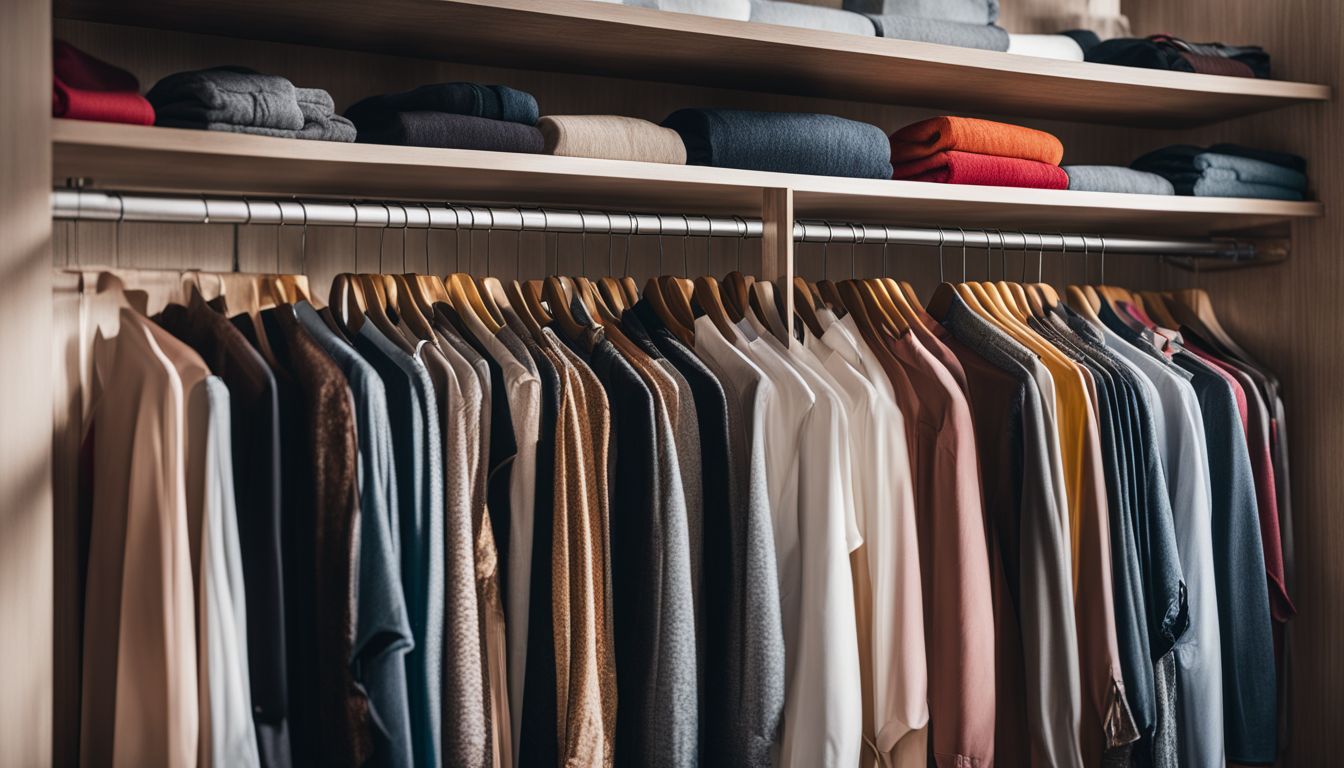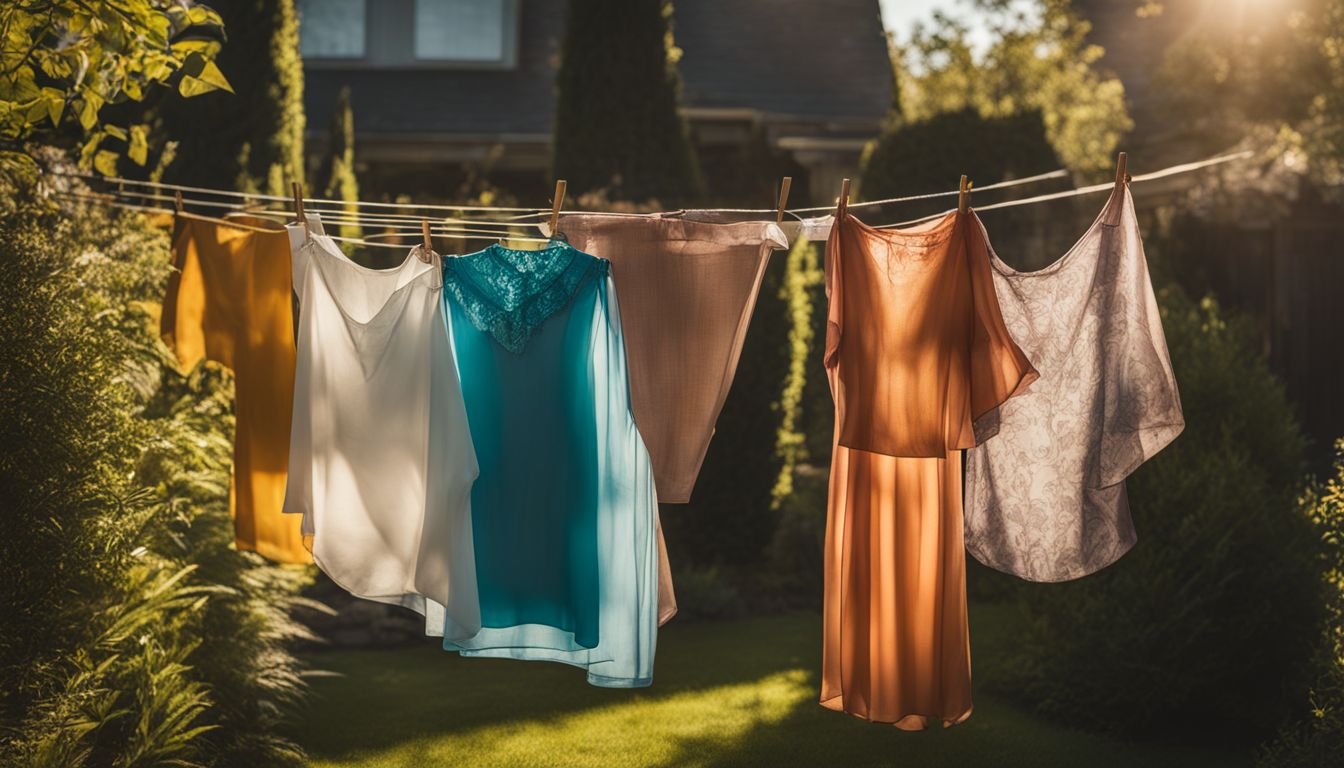9 Online Platforms to Turn Your Old Clothes into Cash – No Expertise Required!
Some popular platforms for selling clothes online include ThredUp, Depop, Poshmark, eBay, Tradesy, and The RealReal.
ThredUp

ThredUp makes selling clothes easy. It is a big online store for used clothes. You send them your old clothes. They do the hard work for you. They take photos of each piece and put it on their site to sell.
This saves you time and effort. You can make money from things you don’t wear anymore, like that dress that’s been in your closet too long! ThredUp also cares about our planet by reducing waste through recycling clothes.
Depop

Depop is an online resale platform and app that started in the UK back in 2011. It’s a popular choice for selling clothes online, especially among younger generations. Depop aims to promote ethical fashion by providing a marketplace for individuals to sell their preloved clothing items.
With over 21 million users worldwide, Depop offers a wide range of styles, from vintage pieces to trendy streetwear. Sellers can easily create listings with photos and descriptions of their items and connect with potential buyers through messaging.
Depop also allows sellers to set their own prices, giving them control over how much they earn from their sales. So if you’re looking to declutter your closet or make some extra cash from your unwanted clothes, Depop is definitely worth considering!
Poshmark

Poshmark is a popular platform for selling clothes online. It’s like having your own virtual closet where you can list and sell your preloved or new clothes. With millions of users, Poshmark offers a wide marketplace to reach potential buyers.
The app is user-friendly, making it easy to upload photos and create detailed descriptions of your items. You can even negotiate prices with interested buyers! Poshmark takes care of the shipping process, providing you with a prepaid label when an item sells.
Plus, they have active social features that allow you to connect with other sellers and shoppers in the community. Start decluttering your closet and make money by selling on Poshmark today!
eBay

eBay is the biggest platform for selling clothes online, with clothing being one of the top categories on the site. There are over 20 million clothing items listed on eBay, making it a great place to sell your clothes and reach a wide audience.
People of all demographics use eBay to buy and sell clothes, so you have a good chance of finding buyers for your items. Selling clothes on eBay is an easy way to make some extra money from the comfort of your own home.
Tradesy

Tradesy is an online platform where you can sell your unwanted clothes and accessories. It is known for its user-friendly interface and wide range of designer brands. When you list an item on Tradesy, they provide interactive tools to help you create a detailed listing with high-quality photos.
They also handle the shipping process for you, making it easy and convenient. With over 12 million members, Tradesy offers a large marketplace to sell your items quickly and at competitive prices.
Whether you’re looking to declutter your closet or make some extra cash, Tradesy is a great platform to consider.
The RealReal

The RealReal is a popular online platform for selling clothes and other luxury items. It specializes in high-end fashion, including designer clothing, accessories, and jewelry. The website has a strict authentication process to ensure that all items sold are genuine.
Sellers can consign their items with The RealReal and receive a portion of the sale price once the item is sold. Buyers can shop for pre-owned luxury goods at discounted prices compared to buying brand new.
The RealReal also offers free shipping on eligible orders and provides detailed product descriptions and photos for each item listed. It’s a great platform for those looking to sell or buy luxury fashion pieces online while ensuring authenticity and quality.
Factors to Consider When Choosing an Online Selling Platform

When choosing an online selling platform, consider factors such as commission fees, user interface and experience, target audience, and shipping and return policies.
Commission fees

When choosing an online selling platform for your clothes, one important factor to consider is the commission fees. Different platforms have different fee structures, so it’s essential to understand how much you’ll be charged for each sale.
For example, eBay charges a final value fee based on the total amount of the sale, while Poshmark takes a flat commission fee of 20% for sales over $15. ThredUp offers upfront payouts or consignment options with varying commission rates.
Understanding these fees will help you determine which platform aligns best with your profit goals.
User interface and experience

The user interface and experience of an online selling platform are important factors to consider when choosing where to sell your clothes. You want a platform that is easy to navigate, visually appealing, and provides a smooth and seamless selling process.
A well-designed interface makes it easier for you to list your items, upload photos, write descriptions, set prices, and manage your inventory. It also helps potential buyers find your listings quickly and easily.
Additionally, a positive user experience includes responsive customer support, clear communication about fees and policies, as well as secure payment options. Choosing a platform with a user-friendly interface and great overall experience can significantly enhance your selling success.
Target audience

The target audience for selling clothes online is diverse and includes individuals of all ages who are interested in buying secondhand clothing. Online platforms for selling clothes cater to different demographics, allowing sellers to reach a wide range of potential buyers.
People looking to buy used clothes online may include bargain shoppers, fashion enthusiasts, eco-conscious consumers, and individuals looking for unique or vintage items. Selling clothes online is also popular among those who want to declutter their closets and make some extra money.
With the convenience and accessibility of online platforms, anyone can participate in the resale market and enjoy the benefits of buying or selling secondhand clothing.
Shipping and return policies

When selling clothes online, it’s important to consider the shipping and return policies of the platform you choose. Different platforms have different policies in place, so make sure to read and understand them before listing your items for sale.
Some platforms may provide pre-paid shipping labels, while others may require sellers to handle shipping themselves. It’s also crucial to be aware of the return policies, as buyers may want to return items that don’t fit or meet their expectations.
Understanding these policies will help you provide a smooth and satisfactory experience for both yourself and your customers.
How to Sell Clothes Online

To sell clothes online, you should start by thoroughly cleaning and photographing your items to attract potential buyers. Write detailed descriptions that include important details about the condition, size, and brand of each piece.
Set competitive prices based on market value and consider offering discounts or promotions to increase sales. Promote your listings through social media and influencers, and ship items promptly once they are sold to ensure customer satisfaction.
Clean and photograph your clothes
To sell your clothes online, it’s important to clean them first. Make sure they look fresh and presentable by washing or dry cleaning them. After that, take clear and high-quality photos of each item you want to sell.
Good photos will attract more buyers and help showcase the condition and style of your clothes.
Write detailed descriptions
When selling clothes online, it is important to write detailed descriptions of your items. Be sure to include information about the brand, size, condition, and any unique features or flaws.
Use clear and concise language to describe the color, material, and style of the clothing. Include measurements when possible to help potential buyers determine if the item will fit them correctly.
Adding keywords like “vintage,” “boho,” or “trendy” can attract specific buyers looking for those styles. Don’t forget to mention whether the item has been worn before or if it’s new with tags.
By providing accurate and thorough descriptions, you increase your chances of attracting interested buyers and making successful sales online.
Set competitive prices
To maximize your sales and attract buyers, it’s important to set competitive prices for your clothes. Take into account the condition of the items, their brand, and their original price when determining the price tag.
Research similar listings on the platform you’re using to get an idea of what other sellers are charging. Keep in mind that pricing too high might discourage potential buyers, while pricing too low may make them question the quality of your items.
Find a balance that reflects the value of your clothes and appeals to customers looking for a good deal.
Promote your listings
To increase visibility and boost sales, it’s important to promote your listings when selling clothes online. One effective way to do this is by utilizing social media platforms like Instagram and Facebook.
Share high-quality photos of your clothing items with catchy captions and relevant hashtags to attract potential buyers. You can also collaborate with influencers or fashion bloggers who have a large following to showcase your products.
Additionally, offering discounts or running promotional campaigns can help generate interest in your listings. Don’t forget to provide exceptional customer service throughout the process, as positive reviews and word-of-mouth recommendations can go a long way in attracting more buyers.
Ship items promptly
Once you’ve made a sale, it’s important to ship the items promptly. This helps build trust with buyers and ensures that they receive their purchases in a timely manner. By shipping items quickly, you can provide exceptional customer service and increase the likelihood of positive reviews and repeat business.
Remember, satisfied customers are more likely to recommend your store to others. So make sure to package the items securely, choose a reliable shipping method, and upload tracking information if available.
By being prompt in shipping your items, you can enhance your online selling experience and maintain happy customers.
Tips for Maximizing Sales and Profit

Maximize your sales and profit by staying updated on current fashion trends, offering discounts and promotions, providing exceptional customer service, utilizing social media and influencers for marketing, and continuously adding new inventory.
Stay updated on current fashion trends
To maximize sales and profit when selling clothes online, it’s important to stay updated on current fashion trends. Knowing what styles and designs are popular can help you curate your inventory and attract more buyers.
Keep an eye on fashion magazines, social media influencers, and online blogs to see what the latest trends are. By offering trendy clothing items, you’ll be able to appeal to a wider audience and increase your chances of making successful sales.
Don’t forget that staying up-to-date with current fashion trends can also give you insights into pricing your items competitively, as in-demand styles may command higher prices.
Offer discounts and promotions
To increase sales and attract more customers, it’s a good idea to offer discounts and promotions when selling clothes online. You can run limited-time sales, bundle deals, or even offer free shipping on certain items.
By offering these incentives, you can entice potential buyers to make a purchase and stand out from your competition. Additionally, providing special deals can help you clear out inventory faster and make room for new items.
Don’t forget to promote your discounts and promotions through social media or email marketing to reach a wider audience of interested shoppers.
Provide exceptional customer service
When selling clothes online, it’s important to provide exceptional customer service. This means promptly responding to inquiries or messages from potential buyers, addressing any concerns or issues they may have, and ensuring a smooth and pleasant buying experience.
By providing excellent customer service, you can build trust with your customers and increase the likelihood of repeat purchases or positive reviews. It’s also helpful to offer clear and detailed product descriptions, accurate sizing information, and prompt shipping.
Remember, happy customers are more likely to recommend your online store to others and help grow your business.
Utilize social media and influencers for marketing
To boost your sales and reach a wider audience, it’s important to utilize social media and influencers for marketing. Social media platforms like Instagram, Facebook, and Twitter allow you to showcase your clothes to potential customers.
You can create engaging posts with attractive images of your clothing items along with catchy captions to grab attention. Don’t forget to use popular hashtags related to fashion and clothing to increase visibility.
In addition, partnering with influencers in the fashion industry can be highly effective in promoting your online store. Influencers have a strong following on social media and their recommendations carry weight among their followers.
By collaborating with relevant influencers who align with your brand values, you can tap into their fanbase and gain exposure for your clothes.
Remember that authenticity is key when working with influencers – choose those whose style resonates with your target audience and let them create content that showcases how they incorporate your clothes into their everyday life.
This will create trust among their followers and increase the likelihood of conversions.
Continuously add new inventory
To maximize sales and keep customers interested, it’s important to continuously add new inventory to your online clothing store. By regularly adding fresh and trendy items, you can attract a wider range of customers who are looking for the latest styles.
This also gives returning customers a reason to keep coming back to see what’s new. Adding new inventory can be as simple as sourcing unique pieces from thrift stores or estate sales, or even creating your own designs.
By keeping your selection updated and exciting, you’ll increase your chances of making more sales and growing your profits in the online clothing resale industry.
Conclusion

In conclusion, there are many online platforms available for selling clothes and turning your wardrobe into cash. Whether you choose established sites like eBay or fashion-focused apps like Poshmark, the options are endless.
With a little cleaning, photographing, and marketing effort, you can go from rags to riches by selling clothes online. Start decluttering today and make some extra money while promoting sustainability in the fashion industry!
FAQs
1. Can I sell clothes online without a website or physical store?
Yes, you can sell clothes online through various platforms that provide a marketplace for sellers to showcase and sell their products.
2. Are there any fees involved in selling clothes on these platforms?
Yes, most platforms charge certain fees such as listing fees, transaction fees, or commissions on each sale. It’s important to research and compare the fee structures before choosing a platform.
3. Do I need professional photography skills to sell clothes online?
While professional-looking photos can attract more buyers, you don’t necessarily need specialized photography skills. Good lighting and clear images of your clothing items are sufficient for effective online selling.
4. What types of clothing can I sell on these platforms?
You can sell various types of clothing including new or used items, vintage pieces, designer brands, accessories, and even custom-made garments on these platforms.







